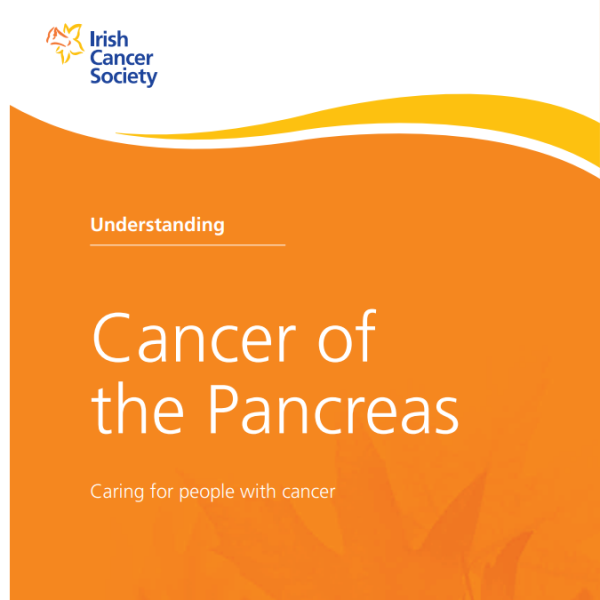Symptoms and diagnosis of pancreatic cancer

Symptoms of pancreatic cancer
- Pain or discomfort in your tummy area, which may spread to your back
- Unexplained weight loss
- Indigestion
- Jaundice (yellow skin and eyes, dark urine and itchy skin)
- Loss of appetite
- Nausea (feeling sick)
- Feeling full very quickly
- A lasting change in your bowel habits – pale, smelly, floaty stools
- A new diagnosis of diabetes without weight gain
- Tiredness
Sometimes there may be no signs or symptoms in the early stages of pancreatic cancer.
All these symptoms can be caused by other common conditions, but it’s important to go to the GP and get any unusual changes checked.
Can I be screened for pancreatic cancer?
Testing for pancreatic cancer when you have no symptoms is called screening. There is no national screening programme for pancreatic cancer as it is not a common cancer and there is no single test to diagnose it. If you're worried about your risk of pancreatic cancer, talk to your family doctor.
If you have a strong family history of pancreatic disease or cancer or you have one of the genes that increase the risk of pancreatic cancer, talk to your GP about screening. Screening can include a CT scan, or MRI scan and an EUS (endoscopic ultrasound) every 3 years. Screening usually starts at the age of 40.
Talk to your GP about screening if you have a family history of pancreatic cancer or genetic risk factors.
Diagnosing pancreatic cancer
Tests with your GP
Your family doctor (GP) will talk to you about your symptoms and your family history and examine you.
If your GP thinks you need tests at the hospital, they will refer you to a consultant. Depending on your test results, you may be referred to The National Surgical Centre for Pancreatic Cancer at St Vincent's, Dublin and Cork University Hospital.
Tests at the hospital
Blood tests
Blood tests can check your general health. A special blood test called CA 19-9 might also be taken. CA 19-9 is a substance made by the pancreas and is called a biomarker. If it is raised, it can help to diagnose pancreatic cancer. Even with pancreatic cancer, however, you can have a normal level of CA 19-9. Checking biomarker levels may also help doctors to see how well you are responding to treatment.
CT scan (CAT scan)
This is a special type of X-ray that gives a detailed 3D picture of the tissues inside your body. It is the most important test in the diagnosis of pancreatic cancer. It is also important when planning surgery.
PTC (percutaneous transhepatic cholangiography)
This gives X-ray images of your bile ducts and the surrounding area. Your doctor numbs an area of your tummy (abdomen) with local anaesthetic first. They then put a thin needle through your tummy and into your liver. A dye is injected into the area so that your doctor can see any blockages on the X-ray. Your doctor may also take a sample of cells (biopsy) during the PTC.
MRCP scan
This stands for magnetic resonance cholangiopancreatography. It is a type of MRI scan that shows up the pancreatic duct, bile ducts and gallbladder in more detail. It is often helpful in planning treatment of jaundice that is due to a tumour. It takes about 20 minutes.
Endoscopic ultrasound (EUS)
An EUS is often used in the diagnosis of pancreatic cancer. It involves an endoscope, which is a thin tube that the doctor passes down your throat. It can take ultrasound pictures from inside your body to help find small cancers. A biopsy needle can also be passed through the scope so that a sample of a tumour can be taken.
Laparoscopy
This is sometimes used to diagnose or stage cancer of the pancreas. It allows your doctor to look inside your abdomen. To do the test, the doctor needs to make a small cut in your abdomen so he can put in a scope which he can look through and use to take a biopsy. By looking through the scope the doctor can see your pancreas and nearby organs and can decide what surgery might be suitable. This test is done under anaesthetic.
Biopsy
This means taking a sample of tissue from the body and looking at it under a microscope to find out if cancer cells are present. There are many ways to take a biopsy. For example, it may be done during an EUS or laparoscopy or the doctor may put a needle through the skin in your tummy area, guided by an ultrasound or CT scan. This test can confirm a diagnosis of pancreatic cancer.


For more information
Phone
1800 200 700



